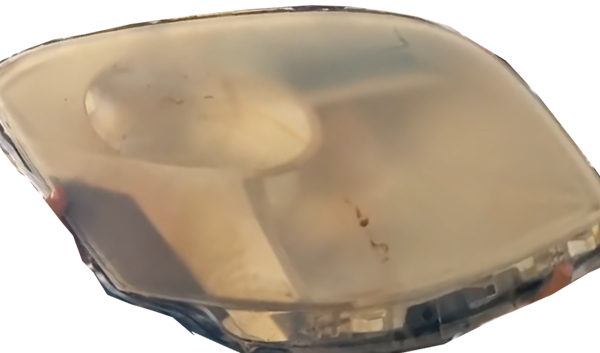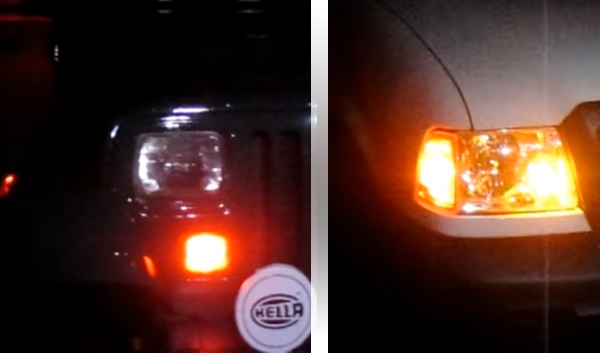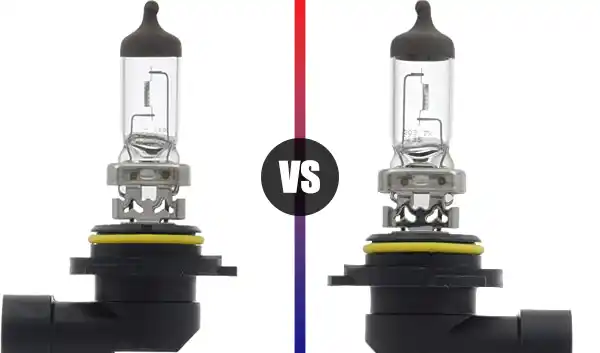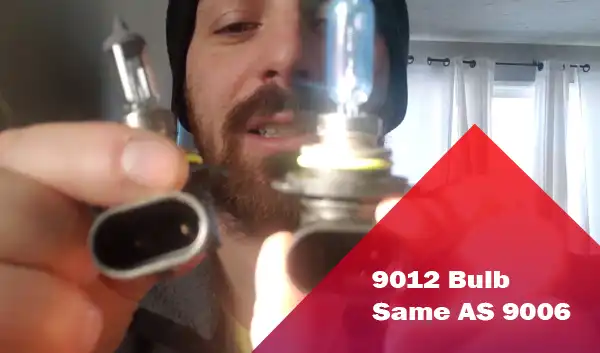Oxidation is a chemical reaction. The oxidation process is accelerated by the presence of oxygen and water, and because of these headlights become foggy, coat and, yellowing.
There are many things can cause oxidation on the headlight and lenses as well, including exposure to UV light, poor quality rubber seals or gaskets, and heavy road grime. The best way to prevent your headlights from oxidizing is by keeping them clean and always trying to park them in a cool or dry place and away from direct sunlight. In this context, we will discuss here how to prevent headlights oxidation.
No products found.
After reading this article hopefully you can clean your foggy headlights and, or restore headlights permanently from oxidation by himself.
One or More of the Following Methods May Help You to Learn How to Keep Headlights from Oxidation:
- Wax: The use of wax prevents the headlights from being corroded because it does not allow water to penetrate the surface of the headlight lens.
- Anti-Corrosive Agents: The anti-corrosive agents are used to avoid corrosion by absorbing water that comes in contact with the surface of the headlight lens.
- Protective Coating: The protective coating is applied on top of wax or shiny agents so that it will give protection against moisture, dust, and scratches that cause the headlights to yellow. Toothpaste baking soda can also be used.
- Whenever you wash your car, you should wipe your headlights down as well.
Rust can be a big problem, before you replace cloudy headlights, you may follow these simple steps to prevent rust, and it will help you how to keep your headlights from oxidation and save your money.
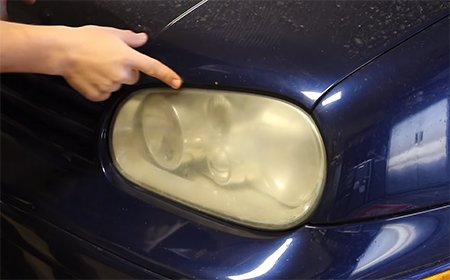
Before we go through the steps we need these:
- Water spray
- Microfiber Towel
- Compound
- Car Polish
- Metal Polish
- Wet & Dry Sandpaper with Different Grip Sizes
- Foam Backing Pad
- Headlight Polishing Kit (Wool Pad, Foam Pad & Sand Paper)
- Drill and Backing Plate
Steps 1:
Use a microfiber towel to remove dirt surrounding the headlight after spraying some water on it.
Steps 2:
Remove the top layer of foggy or yellow plastic from the lens. You need some compound, metal polish, car polish, and sandpaper in different sizes. All of these items contain have aluminum oxide.
- In order to prevent damaging the paint on the surrounding body panels while sanding, you mask up the surrounding panels with some masking tape.
- Spray some water on the lens and start rubbing with 600 grit sandpaper. For best result, rub first horizontally, keep rubbing with light to medium pressure and spray water as you need. Now you can see the foggy or yellow in plastic is gone but now there’s an identical white haze on the lens these are rubbing scratches.
- Now at the 1500 grit and start rubbing again, this time instead of going vertical, so you can remove the horizontal scratches. now you can see a little bit of haze.
- To remove the horizontal haze, use 3000 grit sandpaper and rub well horizontally and vertically to remove all the scratches.
Steps 3:
In this step, you need a microfiber towel to use compound but you can use a hand, wool pad or you can use drill then you need a headlight polishing kit (drill is much quicker). Remove the masking tape and get some compound on the pad and start buffing, keep maintaining a consistent Spade with a uniform pressure with horizontal overlapping passes and then switch to vertical passes, get some polish to bring back the factory shine. now the clarity is back just like in a brand new headlight.
Steps 4:
- Using UV hard-code or UV heat lamp
- Headlight coating
- Clear coat
- Headlight Covers
Steps 5: My Recommended Option is!
- Headlight Protecting Films: The best thing is this doesn’t get folded under the lens, like coating and yellowing, so when this goes bad remove it and install a new one. This is the only way to restore headlights permanently.
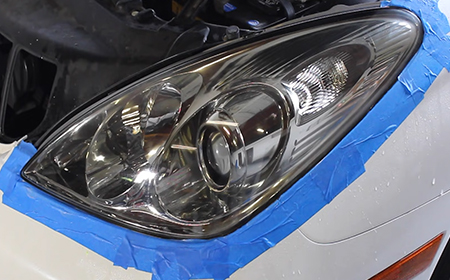
Installation Guide: you need
1) Razor Blade, 2) Small squeegee, 3) Heat Gun or Hairdryer, 4) Spray Bottle, and 5) Dish-washing liquid.
First, you clean the lens with dish-washing liquid and spray some water on the lens and the filmed also, now place the film over the lens, and start pressing from one corner to another corner. Constrict until there is a short burst of water, now use the heat gun to warm the film very lightly, and stretch the film around the curves. At the end of all, with your razor blade, trim the excess part of the film around the curves. Although the work is a little difficult, but the whole work can be doable at home.
Conclusion
There are a few different professional headlight restoration processes I discuss above, But all of these I recommended you to go through steps 5, this is the only way to restore headlights permanently, and this is the cheapest rather the other options.
FAQs:
1. How do I Stop My Headlights From Oxidizing?
Answer: Oxidizing is a chemical process that takes place with oxygen and water. It will continue to happen regularly which cannot be stopped but headlight protecting films, washing, daily caring, park them in a cool and dry place, away from direct sunlight when you parked. these can save your headlight from oxidation for a long time.
2. What Causes Car Headlights to Oxidize?
Answer: There are many things can cause oxidation on the headlight and lenses as well, including exposure to UV light, poor quality rubber seals or gaskets, and heavy road grime
3. What To Put On Headlights To Protect?
Answer: Headlight protective films are the best, they prevent oxidizing, coating and yellowing of the lens.
4. Can Plastic Headlights Be Restored?
Answer: Yes; WAX, Anti-Corrosive Agents, Protective Coating, and Protecting films are the way to restore plastic headlights.
